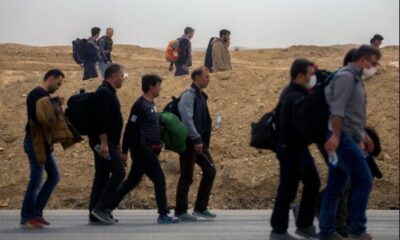World News
Are Wildfires Caused by Utilities or Climate Change? Yes
-

 Entertainment6 days ago
Entertainment6 days agoNaftunes Productions: Shaping the Future of Animation in Kenya
-

 Tech2 days ago
Tech2 days agoThe AI Arms Race: How Cyber-Defenders are Using AI to Fight AI-Generated Threats
-

 Tech2 days ago
Tech2 days agoThe Invisible Hand of AI: How Machine Learning is Building the Resilient, Self-Healing Supply Chains of Tomorrow
-

 General News7 hours ago
General News7 hours agoLamine Yamal: The Teen Who’s Redefining Spanish Football
-

 General News3 hours ago
General News3 hours agoMigration & Refugee Crises: Europe and the Americas Grapple with New Humanitarian Pressures





